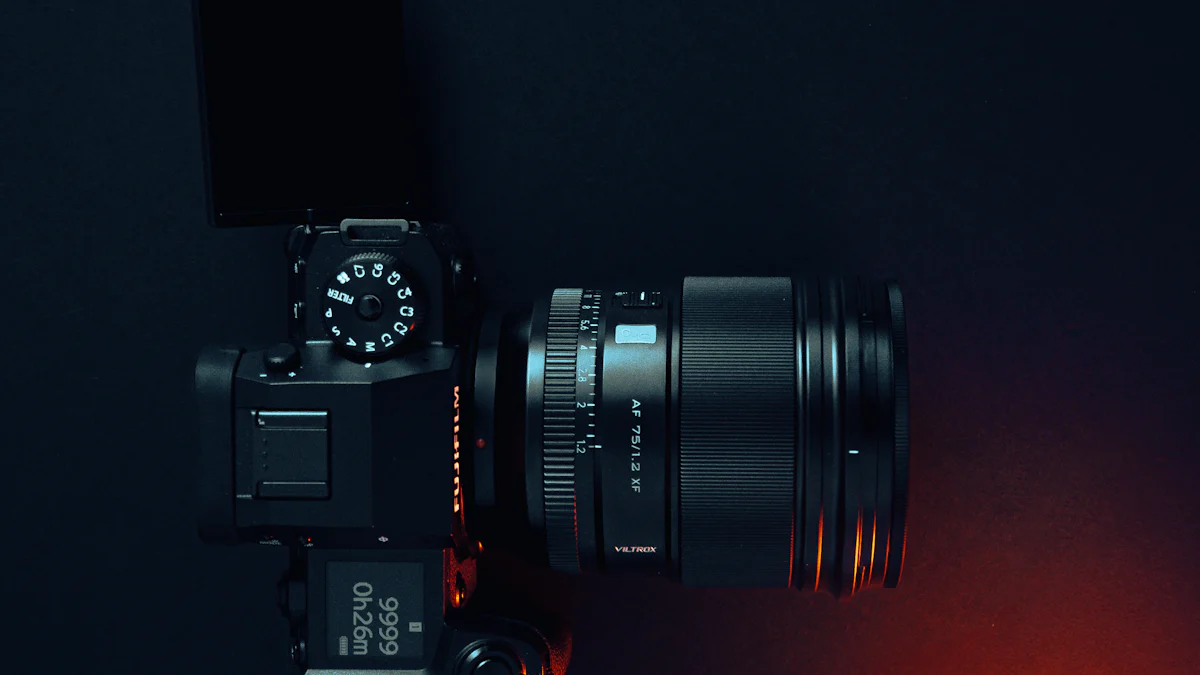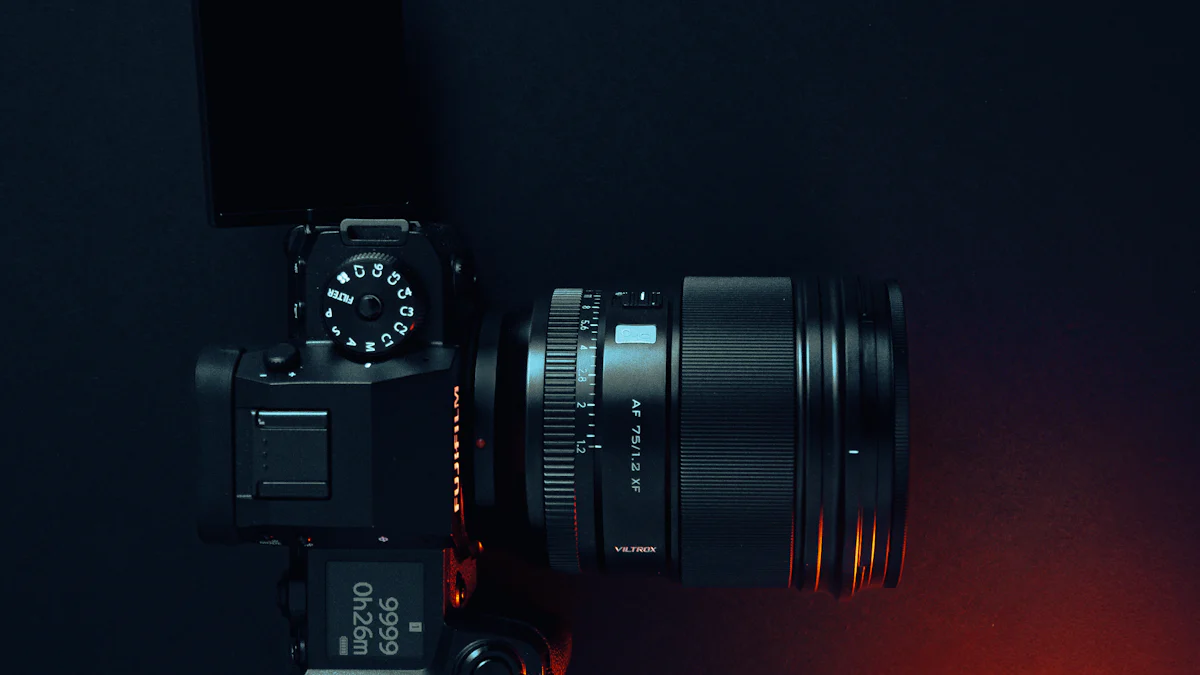Full Frame vs Micro Four Thirds Camera Comparison

Selecting the appropriate camera system is crucial for your photography experience. The ongoing debate of Full Frame vs Micro Four Thirds Camera Comparison captivates many photographers. The latest Full Frame technology is exemplified by models like the Nikon Z9 and Sony Alpha 9 III. Meanwhile, the OM SYSTEM OM-1 Mark II highlights the progress in Micro Four Thirds technology. Full Frame cameras, with their larger sensors, deliver exceptional image quality. On the other hand, Micro Four Thirds cameras are known for their compactness and performance in static low-light conditions. This comparison will guide you in understanding why each system is tailored to meet different photographic needs.
Full Frame vs Micro Four Thirds Camera Comparison

Full Frame Image Quality
Sensor Size and Resolution
The Full Frame vs Micro Four Thirds Camera Comparison often begins with sensor size. Full Frame cameras boast larger sensors, measuring 36x24mm. This size allows for more light-gathering capability. Full Frame cameras shine in capturing detailed images. The resolution benefits from larger photosites. These photosites reduce noise, especially in bright light conditions. Smaller sensors in Micro Four Thirds cameras measure 17.3x13mm. This size results in a higher crop factor. The smaller pixels can introduce more noise. However, advancements have improved performance significantly.
Low Light Performance
Full Frame cameras excel in low light scenarios. Larger sensors gather more light. This feature enhances image quality in dim environments. A lower base ISO setting is possible due to larger photosites. This setting helps in reducing noise. So-called full frame cameras are not always superior in low light. Micro Four Thirds systems have made strides in this area. Improved technology has enhanced their low light capabilities. The Full Frame vs Micro Four Thirds Camera Comparison reveals that both systems offer unique advantages.
Portability and Usability
Size and Weight Considerations
Portability plays a crucial role in the Full Frame vs Micro Four Thirds Camera Comparison. Full Frame cameras tend to be bulkier. The larger sensors contribute to the increased size. This factor makes them less convenient for travel. Micro Four Thirds cameras offer a compact alternative. The smaller size enhances portability. Photographers appreciate the lightweight design. This design makes carrying the camera easier during long shoots.
Ease of Use and Handling
Handling differences emerge in the Full Frame vs Micro Four Thirds Camera Comparison. Full Frame cameras may feel cumbersome. The weight and size require more effort to manage. Micro Four Thirds cameras provide a user-friendly experience. The compact design allows for easier handling. Beginners find these cameras less intimidating. The intuitive controls enhance usability. Both systems cater to different preferences. The choice depends on individual needs and shooting styles.
Cost and Value
Price Comparison
Cost Implications of Full Frame Cameras
Full frame cameras like the Nikon Z9 and Sony Alpha 9 III often come with a hefty price tag. The larger sensors and advanced technology contribute to this cost. Photographers seeking superior image quality and performance in low light find value in these investments. The original full frame models provide exceptional Color Fidelity and dynamic range. Professional photographers appreciate the ability to capture stunning images in challenging conditions. The full full frame cameras offer features that justify the higher price for those who demand excellence.
Affordability of Micro Four Thirds Systems
Micro Four Thirds cameras present a more budget-friendly option. The OM SYSTEM OM-1 Mark II exemplifies affordability without sacrificing performance. Compact design and innovative features attract hobbyists and enthusiasts. The Micro Four Thirds system offers computational photography tricks. These include handheld multi-shot high-resolution modes and digital ND effects. Micro Four Thirds cameras provide excellent Color reproduction and versatility. The lower cost makes them accessible for beginners and casual photographers. The affordability of Micro Four Thirds systems appeals to those seeking quality without breaking the bank.
Long-term Investment and Value
Resale Value of Full Frame Cameras
Full frame cameras maintain their value over time. The Nikon Z9 and Sony Alpha 9 III hold strong resale potential. The robust build and advanced features ensure longevity. Photographers upgrading to newer models find a market for used full frame cameras. The demand for high-quality equipment keeps resale prices stable. Investing in full frame cameras offers long-term benefits. The original full frame technology continues to attract buyers seeking top-tier performance.
Longevity and Upgradability of Micro Four Thirds
Micro Four Thirds cameras like the OM SYSTEM OM-1 Mark II offer impressive longevity. The compact design and durable construction ensure years of use. The Micro Four Thirds system supports a wide range of lenses and accessories. Photographers enjoy flexibility in expanding their gear. The Olympus brand provides regular firmware updates and enhancements. The upgradability of Micro Four Thirds systems keeps them relevant. The Micro Four Thirds cameras adapt to evolving technology, ensuring continued value.
Additional Considerations
Image Stabilization and Computational Photography
Advantages of Micro Four Thirds in Image Stabilization
Micro Four Thirds cameras excel in Image Stabilization. The smaller sensor size allows for more effective stabilization mechanisms. Photographers benefit from reduced camera shake during handheld shots. This feature proves invaluable in low-light conditions. The Inverse Square Law explains how light intensity decreases with distance. Smaller sensors help compensate for this effect. Convention Wisdom suggests larger sensors perform better. However, Convention Wisdom is Wrong in the context of stabilization. Micro Four Thirds systems challenge this notion with advanced technology.
Computational Photography in Full Frame Cameras
Computational Photography transforms the capabilities of Full Frame cameras. These cameras use algorithms to enhance image quality. Techniques like HDR and panorama stitching improve results. Computational Photography bridges the gap between hardware limitations and creative possibilities. Full Frame cameras leverage this technology for superior output. The Inverse Square Law impacts light capture, but computational methods mitigate its effects. Full Frame Sensor SizeAnd advanced processing create stunning images. Photographers explore new creative avenues with these tools.
Lenses and Accessories
Availability and Variety for Micro Four Thirds
Micro Four Thirds systems offer a wide range of lenses. Photographers enjoy diverse options for different shooting styles. Compact and lightweight lenses enhance portability. The system supports various brands, increasing compatibility. Firstly, the flexibility attracts photographers seeking versatility. Firstly, the smaller sensor size allows for unique lens designs. The Inverse Square Law affects light transmission, but lens variety compensates. Photographers find suitable lenses for every situation. The system's adaptability caters to both amateurs and professionals.
Full Frame Lens Options and Compatibility
Full Frame cameras provide extensive lens options. The larger sensor size influences lens design. Photographers benefit from high-quality optics. Full Frame fatigue may occur due to heavier lenses. However, the image quality justifies the effort. Full Frame fatigue challenges photographers during long shoots. The Full Frame price tag reflects the investment in superior lenses. Compatibility with legacy lenses adds value. Photographers appreciate the ability to use older equipment. The Inverse Square Law affects light capture, but lens quality compensates.
Full Frame cameras offer superior image quality due to larger sensors. Micro Four Thirds cameras provide portability and affordability. Each system suits different photographers. Full Frame cameras benefit professionals seeking high-quality images in varied conditions. Micro Four Thirds cameras attract hobbyists who prioritize compactness and versatility. Recent advances have improved both systems. Choose based on your specific needs and preferences. A skilled photographer can create stunning images with any decent camera. Evaluate your priorities and select the system that aligns with your photographic goals.
